7 Ways to Get Rid of Mold in your Home
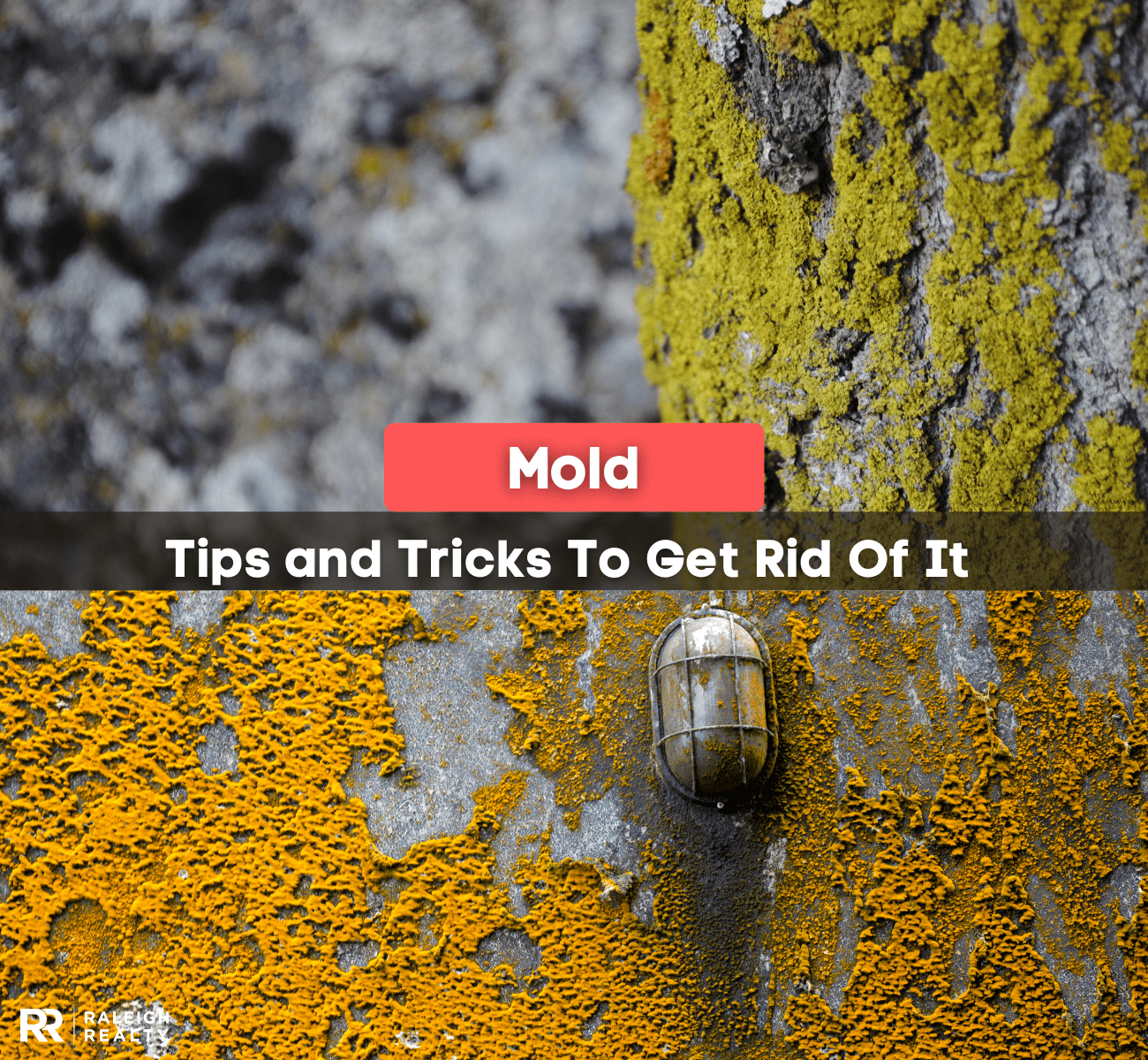
Mold Remediation Tips and Tricks
Here are seven areas of your home where you can find the mold and some tips and tricks for getting rid of it!
Mold. What is it? How do you get rid of it, and why is it essential to do so? If you are currently a homeowner or looking to become one, you will likely have to deal with mold at some point in that process.
Let's take a deeper look at mold and what you can do to prevent and treat it in your home.
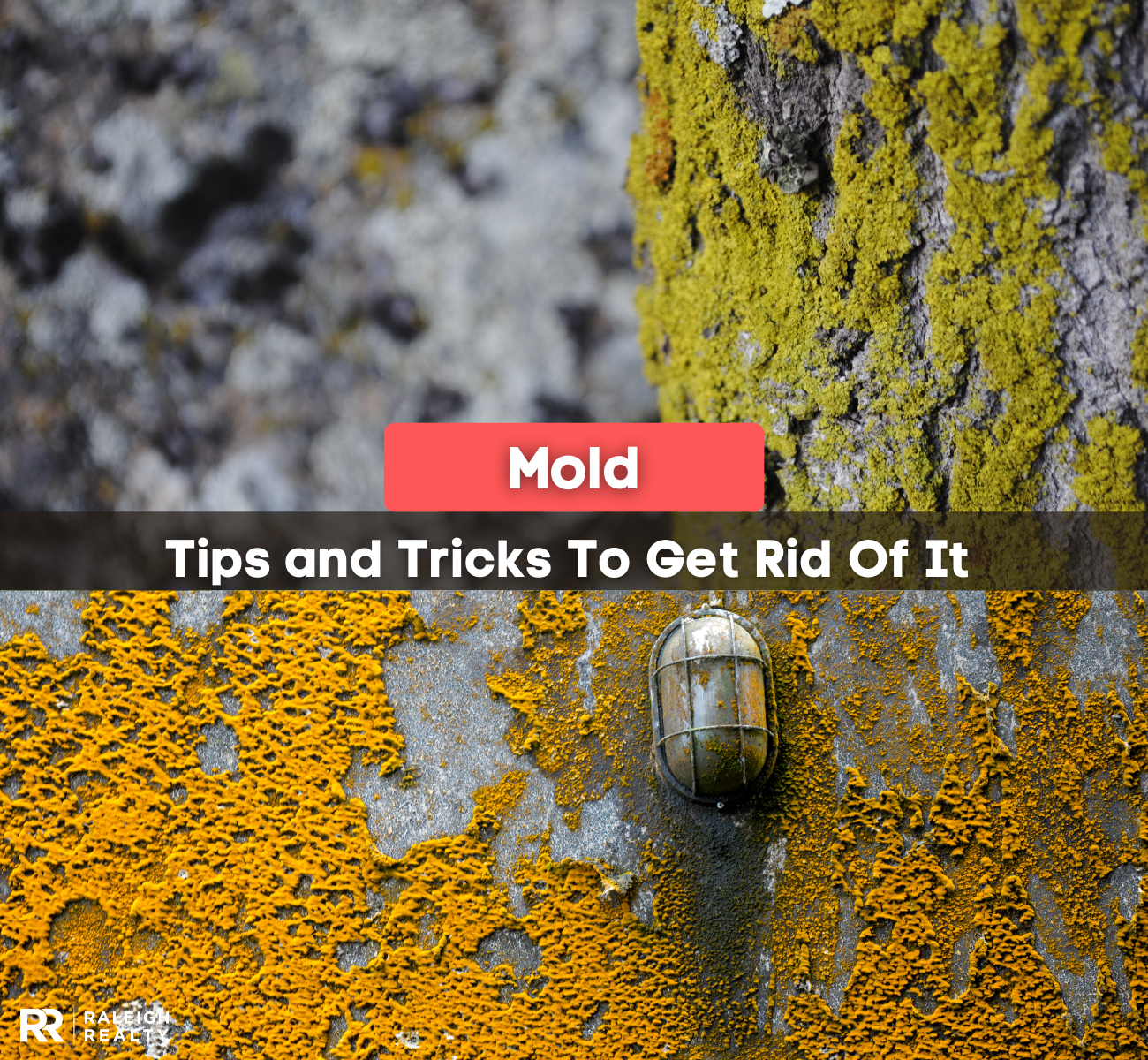
What Exactly Is Mold?
Mold is a fungus made up of large amounts of organisms that are outside and are very beneficial to the environment due to their ability to break down plant and animal matter. However, mold can cause you a whole slew of problems inside your home. Being a fungus, mold releases spores that can then be transported into your home via the following avenues:
-
Doors
-
Windows
-
Air Vents
-
On your pets
You will likely find mold in very dark, damp spaces within your home, which can cause cosmetic issues and have a massive impact on your overall health and wellness. Mold can be a significant problem in homes. Common symptoms of mold exposure are very similar to cold signs and often present in the form of sneezing, difficulty breathing, itchy or watery eyes, sore throat, and coughing. Pre-existing medical conditions like COPD, cystic fibrosis, and a compromised immune system can increase your risk of developing more severe infections following mold exposure.
How Do You Know If It's Mold?
So what are the signs of mold? How do you know that it's there and you aren't just experiencing typical allergy symptoms? Mold commonly starts as a tiny spot in your home but spreads quickly. It can appear to have a cotton-like or velvet texture and presents itself in various colors but is mainly green, black, white, or spotty in color. Not sure if it's mold in your home or just a smudge of dirt? Here are some different signs to look for:
-
A musty, earthy smell
-
Warping or cracking of the material that it is growing on or the materials surrounding it
-
There is not a large availability of light in the area, but there is a source of moisture. You may not notice mold in these areas, but it is a good idea to keep an eye on them just in case. Mold loves low lighting and moisture.
-
Its color lightens quickly with the addition of bleach
Still not sure if you have a mold issue? Outline with a marker around the spot and see if it spreads beyond the boundary. Mold will increase, but dirt does not.
Types of Mold
Why is knowing the type of mold you have in your home necessary? Because then you will better understand how to get rid of it. There are three types of mold commonly found in homes. Let's take a quick look at each!
-
Aspergillus - This is a widespread mold found inside and outside your home, so most people breathe in the spores daily without realizing it. Commonly found in food and air conditioning systems. Despite being very prevalent in the environment, fewer than 40 species that fall under this genus are known to cause health issues in humans.
-
Cladosporium - With over 500 species of Cladosporium, it can be hard to identify in your home but is often found on the back of toilets and air ducts. It is typically black, green, or brown and grows in "pepper-like" tiny spots close to one another.
-
Stachybotrys Chartarym - Otherwise known as black mold or toxic black mold, this type of mold causes the same symptoms as the others. You may hear that this mold causes more severe health problems than any other type, but there is no scientific data to back such a claim. It is often found in drywall, subflooring, or carpets exposed to moisture.
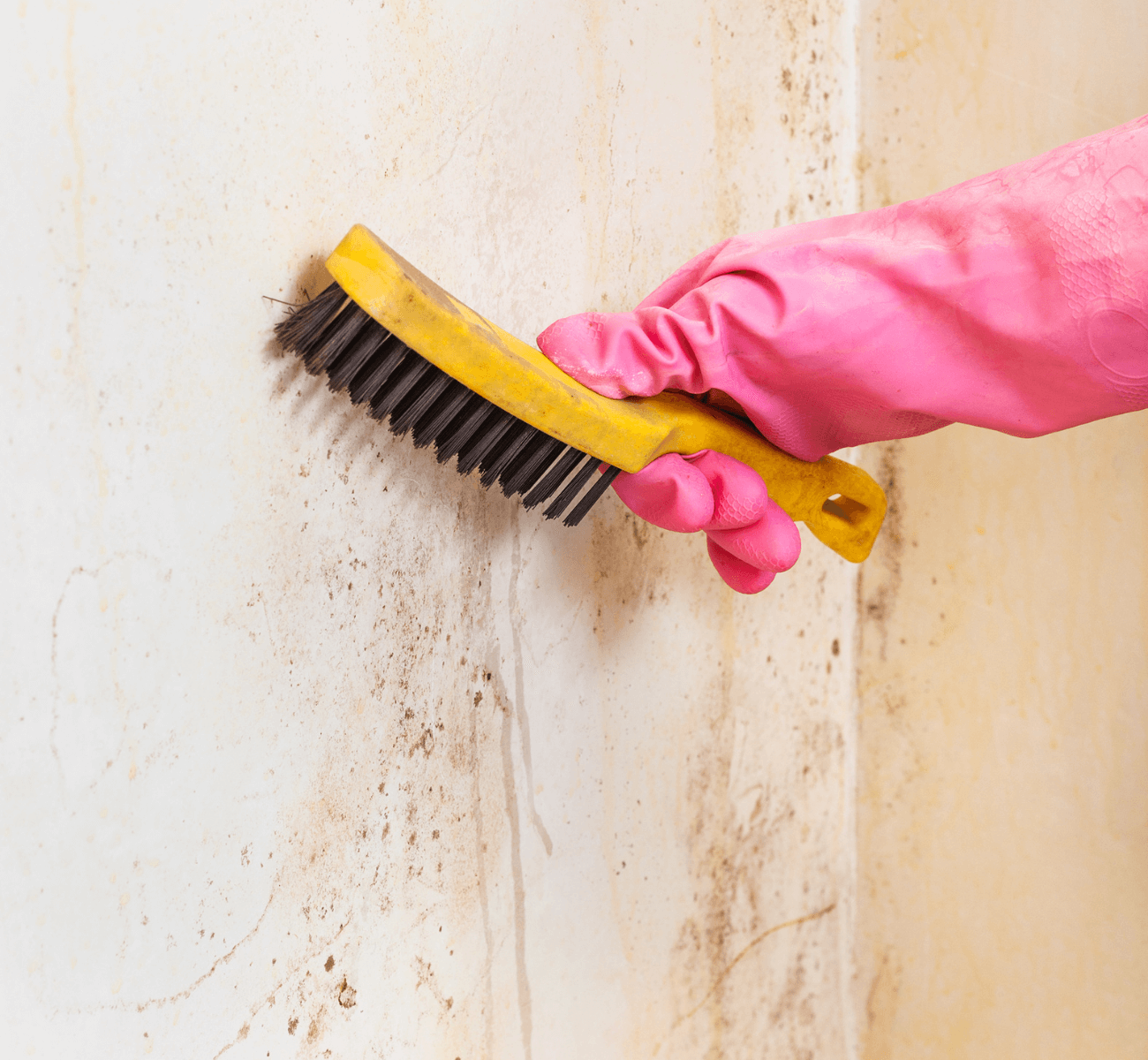
How Do We Get Rid of Mold?
So, once you have concluded that there is mold in your home, how do you get rid of it? Luckily, there are many options for mold remediation depending on what type of surface the mold is growing on, most of which you can even do yourself. If the problem is outside your expertise or you notice that any mold you remove continuously returns, you may need to consider hiring professional help to alleviate the issue.
Let's look at some familiar places mold is found in a home. Be advised: before removing mold from anywhere in your home, it is necessary to take proper precautions. The CDC recommends wearing long pants, a long-sleeved shirt, protective eyewear, and a mask to cover your nose and mouth during removal.
7. Removing Mold From Wood
Removing mold from wood is generally easy as long as it is not too widespread. The steps to remove it are as follows:
-
Vacuum the area to remove any loose spores that may be on the surface
-
Scrub the area with soap and water. If you are dealing with untreated wood, bleach is also an option for this step. Be sure to dry the area thoroughly to eliminate any excess moisture.
If you still notice mold remaining, you can try to sand it out. Be advised that the sanding process will remove any finishes that are on the surface. With wood, mold can travel fairly deeply into its pores, so check back in a couple of days to see if the process needs to be repeated.
6. Removing Mold From Your Walls
When you notice mold on your walls, that may mean a more serious problem behind the scenes. Mold in your walls can indicate a leaky pipe or ventilation issue that you will need to address in addition to the mold removal. If the source of the problem is not fixed, the mold will keep returning no matter how many remediation measures you take. If you suspect a leak, clean the area and see how quickly the mold produces. If it pops up quickly, you may need outside help to address the issue.
Scrubbing mold from your walls can be done most effectively with a large sponge soaked in bleach and water. If there is a particularly stubborn spot, let the solution sit for a few minutes before scrubbing and drying off the area. If that doesn't take care of the problem, see about mixing a mold remover with your bleach solution for a little extra power.
5. Bathroom Mold Removal
Often, mold forms in bathrooms because of a ventilation issue. If you have a fan in your bathroom, make sure to run it when you are taking hot showers so that the moisture and steam don't condensate on the walls and other surfaces. If you live in an older home without a ventilation system in the bathroom, crack a door or window as often as you can while showering so that the steam can dissipate. If you notice any plumbing leaks, address the issue immediately so you don't have any standing water. Standing water can seep into your flooring, causing problems down the road.
Similar to what you would do to remove mold from your walls or wood, a bleach solution mixed with water should do the trick. You will need to match the size of whatever sponge you use to the area you scrub the mold away from. If you remove mold from the corners of your shower or grout between the tiles, something as small as a toothbrush will take care of the problem.
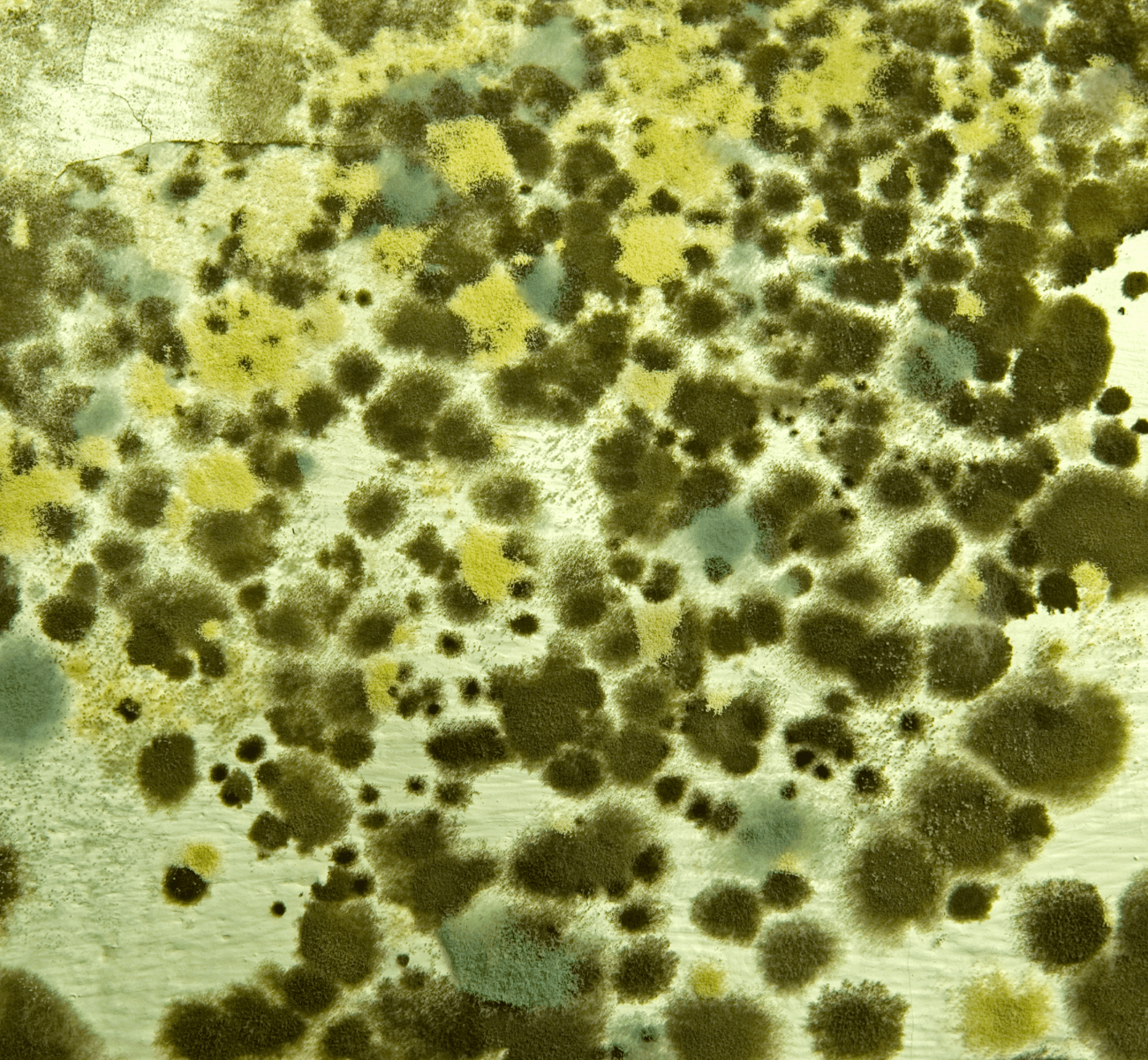
4. Mold Removal From the Exterior of Your Home
One of the main reasons you want to remove mold from the exterior of your home is because it is just plain ugly to look at. Mold outside of the house can become an issue for the interior of the home if not treated. Familiar places for mold to appear on the exterior of your home are decks, porches, and vinyl or wood siding. When working on the surface of your home, a power washer will likely do the trick for your mold issue.
You can use a garden hose if you have stucco or concrete walls in your home. With these materials, give the area a light wash before applying the bleach or cleaning solution, let it sit for a couple of minutes, then rinse it away. When remediating mold outside, it is essential to use a non-toxic solution so you will not harm plants or animals in the process.
3. Mold In Your Kitchen
Much like the bathroom, regularly cleaning with bleach wipes or other cleaning solutions can prevent mold buildup in your kitchen. Wipe away any water you see lingering around your sink, refrigerator, or other appliances, and fix leaks as soon as possible. When putting away your dishes and cutlery, ensure that they are dry to avoid mold buildup in cabinets and drawers.
2. Mold In Your Basement
Mold loves basements. Low ventilation, humidity, and poor airflow make it the perfect home for mold to take over. Basements are also highly prone to flooding from outside or leaky pipes on the upper floors. Basements often feature cinder block or concrete walls, which can be challenging to scrub once mold develops. To prevent decay in basements, regular use of humidifiers can be a huge help. Also, keeping an eye on the exterior of your home for foundation issues is another avenue you can take to be more proactive.
To get rid of mold in your basement, you will need to scrub the surfaces down, but depending on where the mold has developed, you may have to replace materials. Drywall or ceiling tiles are exceptionally porous, so replacing them may be less hassle than repeatedly cleaning the area if the mold returns. If there is mold in your basement carpet, sweep the area to loosen up the spores, and let it dry in the sun. If you have no windows or doors in your basement that provide natural light, you can buy a fan to help dry the area out.
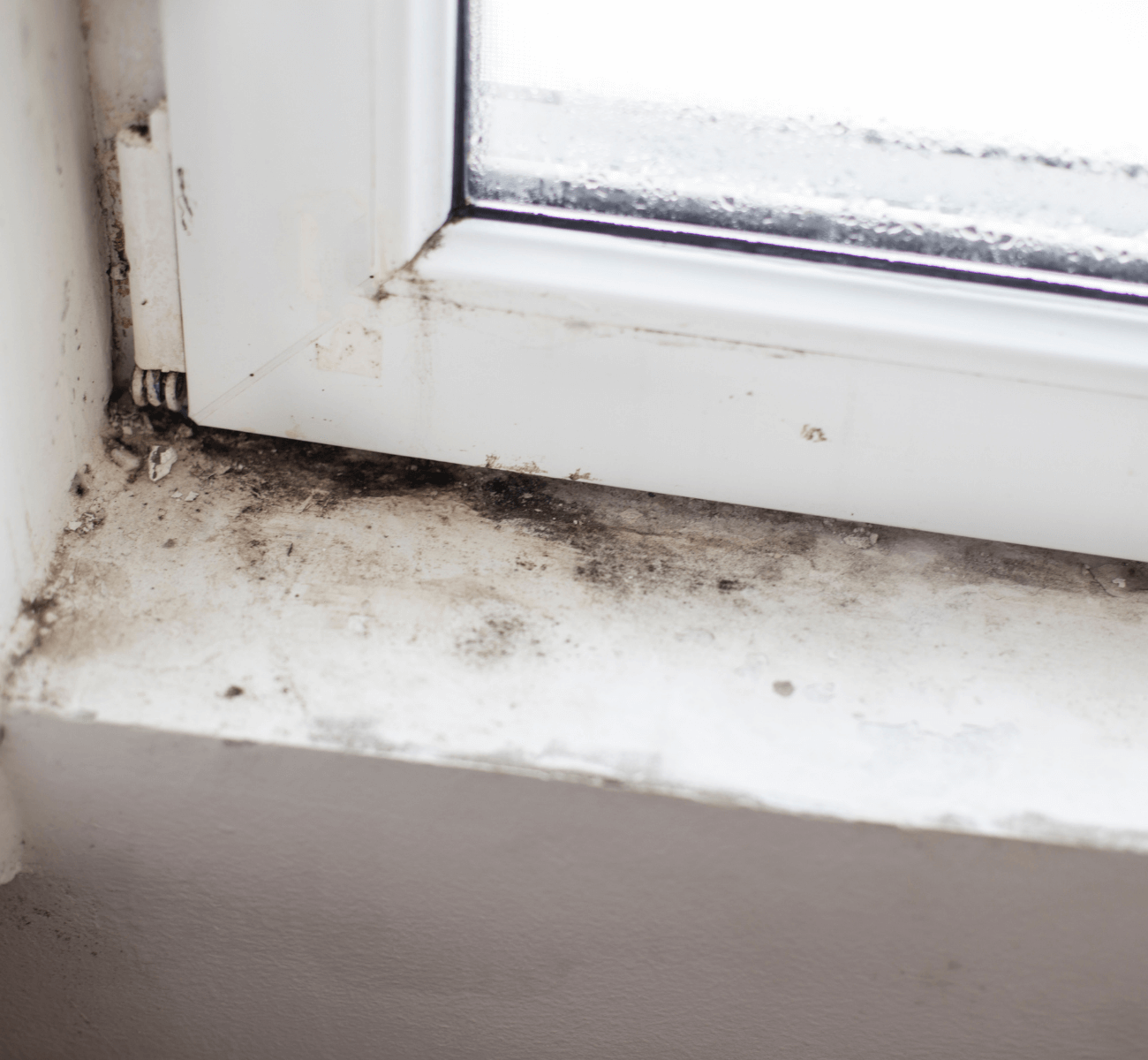
1. Mold In Your Attic
Similar to your basement, your attic is a prime environment for mold to be happy and grow. Scrub any areas where you notice mold, much like other surfaces in your home but take note of any incredibly porous areas so that you can keep an eye out for mold's return post-cleaning.
A homeowner can prevent mold in their attic by aiming at any vents outside the home. Keeping an eye on your roof for leaks in the shingles or skylights is also essential.
Final Thoughts on Mold Remediation
Most mold can be removed on your own by scrubbing down the surfaces with a mixture of bleach and water, a more concentrated mold solution, and by regularly cleaning and drying areas where moisture tends to build up. If you're under contract on a home, your home inspection should reveal any potential mold problems.
If the problem is too big for you to handle, you can seek professional help for mold remediation. Regardless of the city, you live in; several companies will come into your home to do the job for you. It is best to treat the problem as soon as possible and do your due diligence to ensure that there is no more significant issue when dealing with mold. You should be able to negotiate mold remediation when buying a home if you're currently under contract. Always consult a mold remediation specialist if you have further questions!

Ryan Fitzgerald
Hi there! Nice to 'meet' you and thanks for visiting our Raleigh Real Estate Blog! My name is Ryan Fitzgerald, and I'm a REALTOR® in Raleigh-Durham, NC, the owner of Raleigh Realty. I work alongside some of the best Realtors in Raleigh. You can find more of my real estate content on Forbes, Wall Street Journal, U.S. News and more. Realtor Magazine named me a top 30 under 30 Realtor in the country (it was a long time ago haha). Any way, that's enough about me. I'd love to learn more about you if you'd like to connect with me on Facebook and Instagram or connect with our team at Raleigh Realty. Looking forward to connecting!

